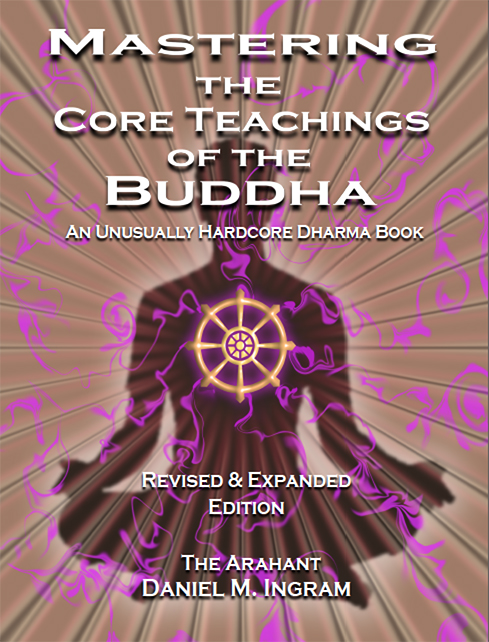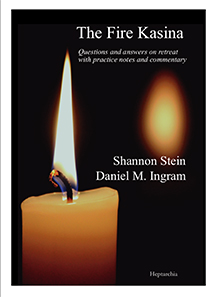The Non-Duality Models
← Models that are Mostly Unhelpful | The Sudden Schools of Awakening →
The non-duality model is without doubt my favorite of them all. It essentially says that the goal is to stop a process of identification that turns some patterns of sensations into a doer, perceiver, centerpoint, soul, agent, or self in some very fundamental perceptual way. By seeing these sensations as they are, the process can be seen through gradually until one day the last holdout of duality flips over and there are no more sensations that trick the mind in this way.
My favorite quote that articulates this model is from a sutta called the Bāhiya Sutta in the Udana (Ud 1.10). In it, the Buddha was talking with Bāhiya of the Bark-cloth (gotta love it!) and said that realization involves this direct insight: “In the seeing just the seen, in the hearing just the heard, in the sensed just the sensed, in the cognized just the cognized”, and then Bāhiya of the Bark-cloth was promptly killed by a cow. On his passing, when asked about his future rebirth, the Buddha said that, having practiced according to that pithy instruction, Bāhiya of the Bark-cloth had become fully unbound before his death, meaning fully awakened. [This story reminds me of the time that foot travelers and I who were walking on the road between Gaya and Bodh Gaya in India had to jump off the road and into a drainage ditch to avoid being run down by a charging water buffalo.]
I may repeat this quote about the sense doors just being exactly themselves without any additional complexity just to make the point of how preposterously profound it is. Basically, there is just a field of sensations, as there was before, but now all these sensations are progressively just seen to be as they are, and all the sensations that we generally call “me” are just a part of this process. In this model presented by the Buddha, direct experience of sensate clarity provides the basis of awakening and eliminates the sense of separation and the dualism of the perceiver. Remember, the Buddha was not into unity as the answer, having rejected that on numerous occasions, nor was he into duality, clearly, which yields (you guessed it) non-duality. Yay, Theravada! So simple! So direct! So immediate! So practical! I just love it.
This non-duality model does not imply anything else. It promises nothing related to any other models, except in some loose way the fundamental perception models and the direct perception models that I will address shortly. The non-duality model is one of the most practical models for practice, in that it focuses on simply perceiving sensations as they are right now. For this reason, it is my favorite model.
Waxing scholastic and away from pragmatism and empiricism momentarily, I realize that some ultra-orthodox Buddhist traditionalists from certain strains will notice that the word “non-duality” does not appear in the Pali canon or the commentaries. Using the term non-duality, particularly as it is often associated purely with Vedanta in the minds of those who don’t know better, can really annoy the crap out of some who feel that anything possibly Vedantic should be kept far away from anything Buddhist to avoid violating fire codes and to protect the children, like the two are matter and antimatter and their contact would blow up the planet. While I don’t fully buy the whole “all religions point to the same truth” thing, as clearly there are some significant and largely unresolvable areas of doctrinal conflict, there are distinct reproducible commonalities that occur when people pay very careful attention to bare sensate reality, because bare sensate reality is how it is.
Thus, stating that my favorite models involve “non-duality” burns some serious bridges with fervent traditionalists. However, I am a pragmatist, empiricist, and phenomenologist at heart far more than I am a politician, obviously, and, as the concept of non-duality as articulated by the Buddha in the Udana fits very well with reproducible experience, it is the one I use.
I could have called this model “The Udana Model” or, even better, the “Bāhiya of the Bark-cloth model”, as that really would have had that ol’ time Theravadan feel to it that I admit I also love aesthetically. Then, even though it was the same model in terms of the direct experience it points to, all the strict canonheads would have been nodding, “Ah, yes, the Udana, very old, very authentic, nice choice.” Clearly, I have all the political savvy of the cow who killed poor Bāhiya of the Bark-cloth, and perhaps someone with better skills will one day present this advanced, technical, practical, reproducible, reality-based material in some softer form.
Back to business: the concept of non-duality as an experience arises many times even in the early Buddhist literature, but it is just phrased differently, such as in the Udana quotation earlier, in the teachings of dependent origination (more on that later), and other deep philosophical areas of even very old Buddhist texts. The concept is also clearly pre-Buddhist, arising in the Vedantic literature perhaps a few hundred years before the birth of the Buddha. It is also incorporated into various Mahayana schools in the word advaya.
There are those who think, “Now wait a second, there is non-duality, and then there is non-duality, and never the twain shall meet,” a view whose dualistic absurdity requires no further comment. If you need help sorting out that sort of complexity, I will refer you to the Internet and libraries (remember libraries?) for more if you wish, with Wikipedia doing a nice job of the complex history of the concept of non-duality and its usage across the various traditions.
I will talk more about the non-duality model as we go, and have already talked about it often in a less direct way. I present it first to serve as a foil or counterpoint to all the other models, and it is one of the only models that can withstand rigorous sensate reality testing without qualification or difficulty. Most of the other models contain some degree of truth in them, either literally or metaphorically, but this one you can hang your hat on all the way through your practice. This awareness develops gradually with some sharp jumps along the way, leading to the endless debates about the sudden versus gradual schools of awakening, a subject that will hopefully become clearer as we go, but probably deserves some mention here.
← Models that are Mostly Unhelpful | The Sudden Schools of Awakening →

